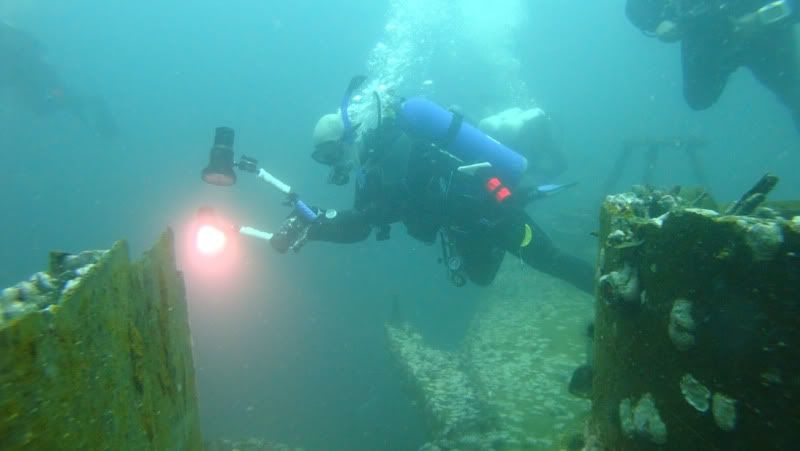axxel57
Contributor
Since I started diving in the 80ies, I have done quite a lot what today would be called deep air dives, at this time that was simply not a big thing ( at least between dive pros).
Just for relaxing all the instructors of the company would come on Sunday morning to the boat of our boss and in the Pemba Channel we would dive the dropoffs. Everybody solo ( that was the understanding even when you were diving close to a fellow instructor), some would go to 330 feet, others 'only' 180', anyway it was always quite and relaxing. Since we dived single 12 liter steel tanks the dives were obviously bounce dives (with a tank waiting at the 15' range), but I liked them so much that I keep on doing them when I have the chance.
For me it makes a huge difference if you dive in tropical warm waters with 100' viz and no or hardly any current, or if you dive cold waters with bad viz or overhead.
Here in the tropics I consider this a calculated risk, O2 no issue because you are too short only exposed in a bounce dive. Narcosis is a different issue.
I get slightly narced everytime I go below 100' ( or I'm simply sensitive enough to realize it). A couple of dives I had to stop descending, because I felt too narced. The funny thing is that this never happened deeper when I had been okay until 120'or so ( have an idea what kind of comments will come for this).
A couple of years ago I changed my descending technique, so nowadays I go down with feet first, forcing myself to breath in a moderate rythm until I hit the deepest point. Only then I start to breath my normal very slow breathing rythm. I haven't had any problem with the narcosis ever since.
Is here a forum to discuss this without getting mobbed?
Just for relaxing all the instructors of the company would come on Sunday morning to the boat of our boss and in the Pemba Channel we would dive the dropoffs. Everybody solo ( that was the understanding even when you were diving close to a fellow instructor), some would go to 330 feet, others 'only' 180', anyway it was always quite and relaxing. Since we dived single 12 liter steel tanks the dives were obviously bounce dives (with a tank waiting at the 15' range), but I liked them so much that I keep on doing them when I have the chance.
For me it makes a huge difference if you dive in tropical warm waters with 100' viz and no or hardly any current, or if you dive cold waters with bad viz or overhead.
Here in the tropics I consider this a calculated risk, O2 no issue because you are too short only exposed in a bounce dive. Narcosis is a different issue.
I get slightly narced everytime I go below 100' ( or I'm simply sensitive enough to realize it). A couple of dives I had to stop descending, because I felt too narced. The funny thing is that this never happened deeper when I had been okay until 120'or so ( have an idea what kind of comments will come for this).
A couple of years ago I changed my descending technique, so nowadays I go down with feet first, forcing myself to breath in a moderate rythm until I hit the deepest point. Only then I start to breath my normal very slow breathing rythm. I haven't had any problem with the narcosis ever since.
Is here a forum to discuss this without getting mobbed?





